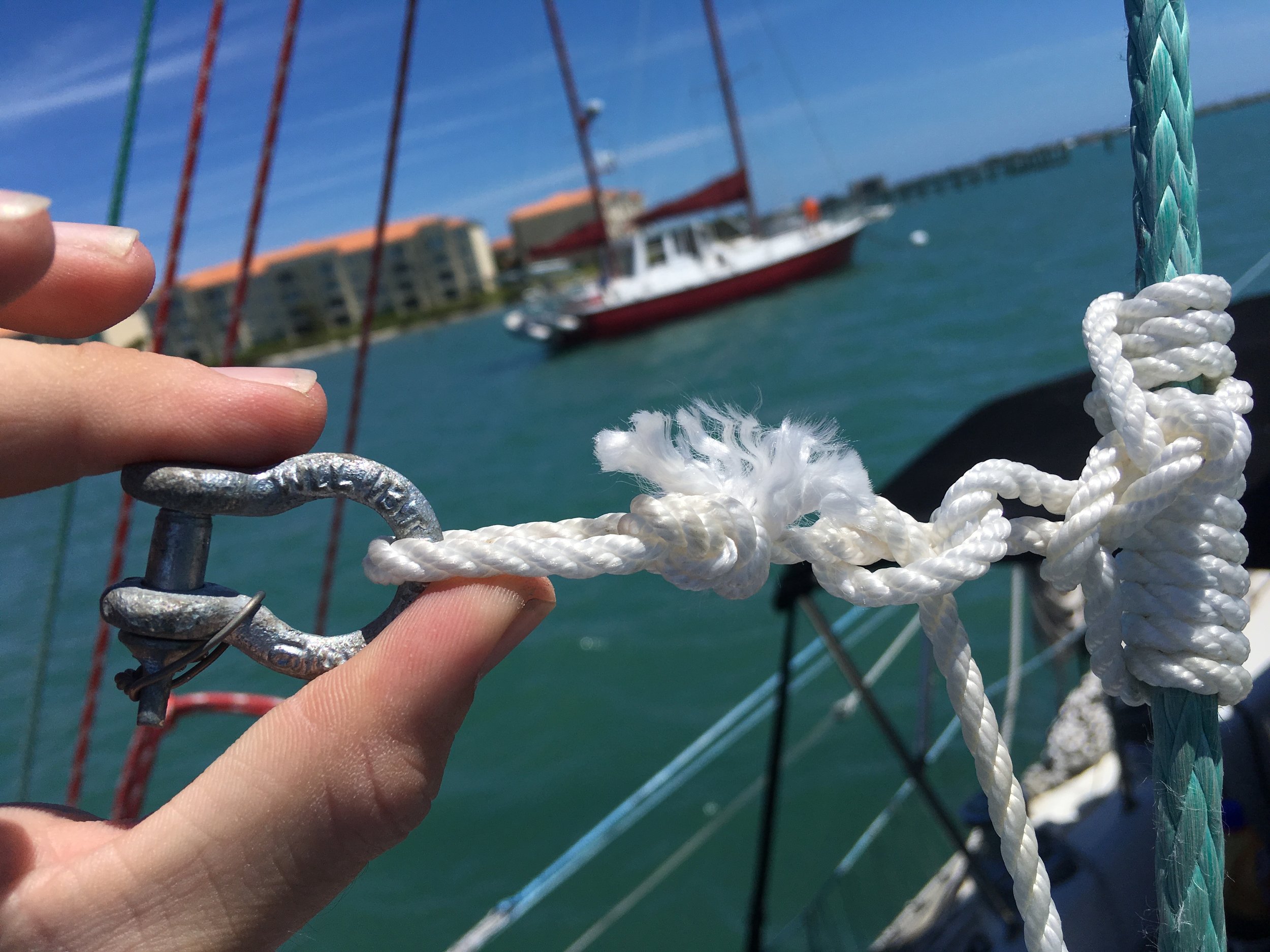A while ago, I did a post about how to select the proper flag size for your yacht. The longer your yacht, the larger the flag should be, that way it all looks proportional.
This is great for weekenders and coastal cruisers who can avoid bad weather by hiding in a protected cove. This is not the case for a cruiser out in the ocean.
Our flag was tied to the topping lift in a location that I could reach. If foul weather was coming, I would furl the flag around the topping lift and tie it off with another line. I had to do this because the flag was large enough to actually pull on the topping lift and cause us to heel a bit.
The flag met its demise one violent storm when its furling line actually came off and the flag flew free. It beat so violently that it shredded itself.
When selecting a replacement flag, I went a size smaller and tied it in the same place. This flag seems appropriately sized for ocean sailing. In storms, it hasn't caused us any ill effects and has not necessitated a good furling. It is small enough that a violent beating doesn't seem to hurt the cloth, as none of the stitches have worked free. This flag is made by the same manufacturer, so it's not a difference there.
When at anchor, the flag does look small relative to the rest of the yachts, but it is still visible from a distance and meets the legal requirements.
If you are choosing a flag for a coastal boat, get a nice big pretty flag to fly! But if you are planning on crossing blue water, consider choosing a flag that is a size smaller.







